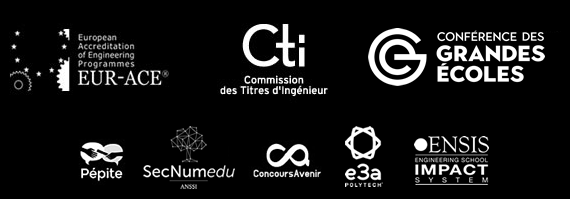The Multidisciplinary Digital Publishing Institute (MDPI) is a leading publisher. MDPI Books is their platform for publishing open-access scientific books. They also printed the text of a teacher-researcher from ESILV.
MDPI Books includes monographs, book series, edited books, and reprints of particular issues and thematic collections—an opportunity to delve into polymers and 3D.
Polymers and Their Application in 3D printing: an online book, but not only.
Hamidreza Vanaei, a teacher-researcher at ESILV and an alumnus of ENSAM, has had his research work published on MDPI and MDPI Books, but also in book format by MDPI.
His book “Polymers and Their Application in 3D Printing”, produced in collaboration with his two thesis professors at ENSAM, Sofiane Khelladi, and Abbas Tcharkhtchi, presents how the progressive advances of this process in the industry and the application of polymeric (or even composite) materials have been the subject of much attention. Researchers and industries are now engaging in 3D printing by implementing many polymeric materials in their field.
In this special issue, the book written by the two researchers and edited by Hamidreza Vanaei includes a collection of recent and new work on the application of polymers in 3D printing.
Hamidreza Vanaei teaches Digital Modeling and Mechanics at ESILV, but his main area of interest is 3D printing. He uses mechanics and materials to carry out his research work.
I started teaching machinery in artificial intelligence some time ago to apply it to the students in the ESILV research course.
Special issue on 3D printing edited, published, and printed
Usually, international journals always ask researchers to write this type of research in different areas for particular topics or SI.
In this type of publication, the role of the editor is essential. Different researchers must proofread and validate an article published in a scientific journal.
For this special edition, I am the editor. I first validated whether there was an initial screening and then sent it for review. The reviewer will validate if it’s good and if there are more things to correct or revise.
The authors make changes if necessary, and then the work goes through the editor again, who has to validate whether the work is acceptable for scientific publication.
If the publication meets a set of quality criteria, it is exceptionally possible to publish it in a “small book” format. If this is the case, the work the journal publishes the text. This procedure is general and valid for all research journals.
This was the case for the book edited by Hamidreza Vanaei, which compiles about ten articles in the field of polymers and 3D printing in a “small book” format. The book presents the different materials and polymers for printing a part in a 3D machine.
For example, I have just submitted a project to the ANR (National Research Agency) to print human ears. A person with a damaged, broken, or malformed ear can benefit from printing their ear using different materials. However, it is necessary to check the compatibility with the organs. The ear will be printed and applied, and then the polymer will act as a solvent. In other words, it will dissolve after a while, and we will have a natural ear.
The book includes a collection of 10 articles; it is in English and freely available via this link. The idea to compile these articles dates back to 2018 when Hamidreza Vanaei started working on this topic.
In 3D printing, there are still many challenges in this quality process. All the work done is to optimise it. The idea is to optimise the machines that already exist and come up with a new machine that will be able to print a product with better quality.
The team of researchers has been working on this publication for four or five years, and it still needs to be finished.
I didn’t expect to receive the publication as a printed book. When I received the copy, I was pleasantly surprised!
Printing this work in a book format evidences its quality worth.



















